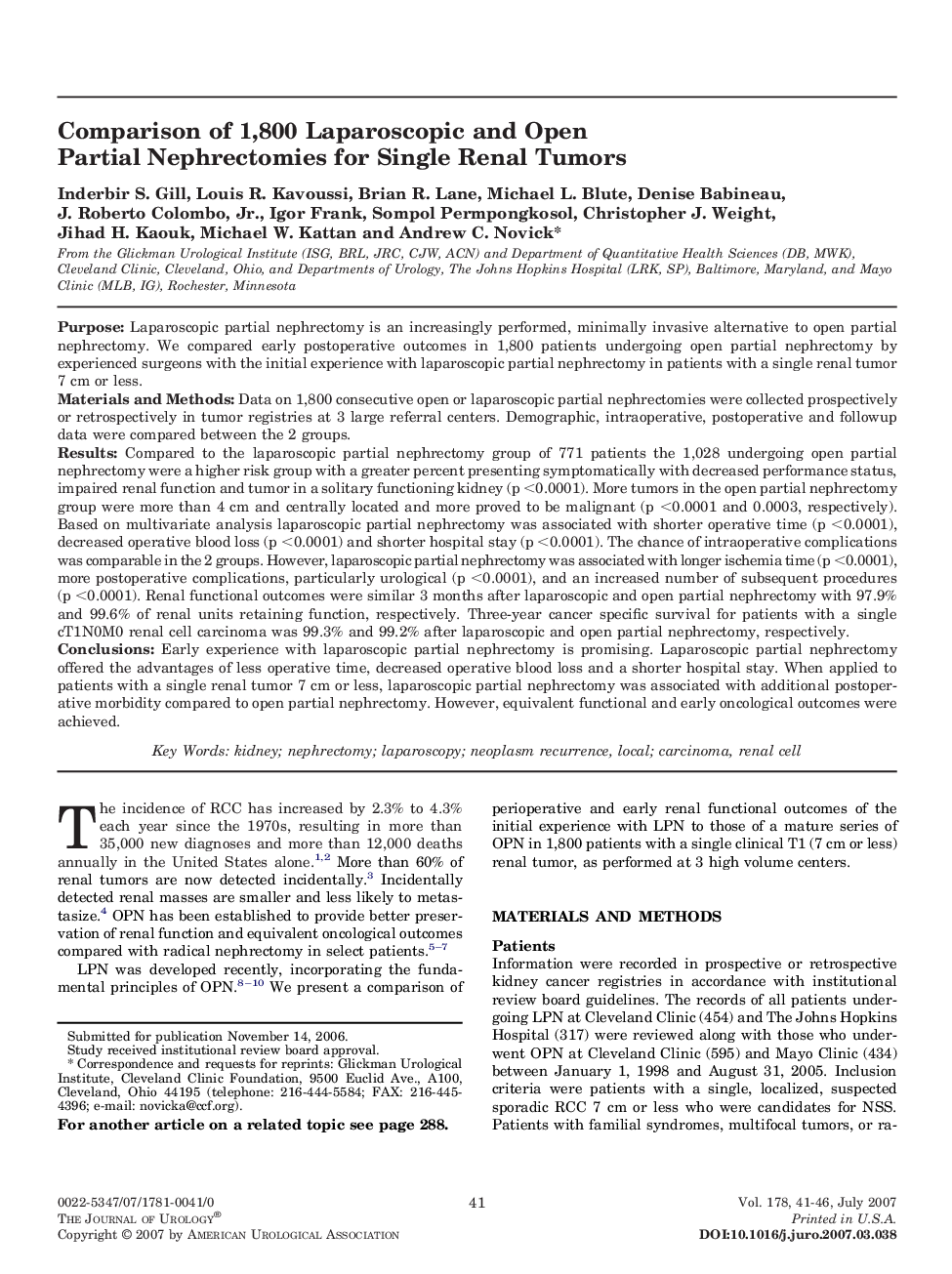| Article ID | Journal | Published Year | Pages | File Type |
|---|---|---|---|---|
| 3878471 | The Journal of Urology | 2007 | 6 Pages |
PurposeLaparoscopic partial nephrectomy is an increasingly performed, minimally invasive alternative to open partial nephrectomy. We compared early postoperative outcomes in 1,800 patients undergoing open partial nephrectomy by experienced surgeons with the initial experience with laparoscopic partial nephrectomy in patients with a single renal tumor 7 cm or less.Materials and MethodsData on 1,800 consecutive open or laparoscopic partial nephrectomies were collected prospectively or retrospectively in tumor registries at 3 large referral centers. Demographic, intraoperative, postoperative and followup data were compared between the 2 groups.ResultsCompared to the laparoscopic partial nephrectomy group of 771 patients the 1,028 undergoing open partial nephrectomy were a higher risk group with a greater percent presenting symptomatically with decreased performance status, impaired renal function and tumor in a solitary functioning kidney (p <0.0001). More tumors in the open partial nephrectomy group were more than 4 cm and centrally located and more proved to be malignant (p <0.0001 and 0.0003, respectively). Based on multivariate analysis laparoscopic partial nephrectomy was associated with shorter operative time (p <0.0001), decreased operative blood loss (p <0.0001) and shorter hospital stay (p <0.0001). The chance of intraoperative complications was comparable in the 2 groups. However, laparoscopic partial nephrectomy was associated with longer ischemia time (p <0.0001), more postoperative complications, particularly urological (p <0.0001), and an increased number of subsequent procedures (p <0.0001). Renal functional outcomes were similar 3 months after laparoscopic and open partial nephrectomy with 97.9% and 99.6% of renal units retaining function, respectively. Three-year cancer specific survival for patients with a single cT1N0M0 renal cell carcinoma was 99.3% and 99.2% after laparoscopic and open partial nephrectomy, respectively.ConclusionsEarly experience with laparoscopic partial nephrectomy is promising. Laparoscopic partial nephrectomy offered the advantages of less operative time, decreased operative blood loss and a shorter hospital stay. When applied to patients with a single renal tumor 7 cm or less, laparoscopic partial nephrectomy was associated with additional postoperative morbidity compared to open partial nephrectomy. However, equivalent functional and early oncological outcomes were achieved.
